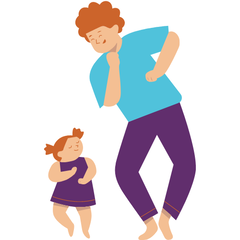

- Showing only suffering
- Surface level diversity
- Ignoring Intersectionality
- Sidekick Syndrome
- Treating groups as monoliths
- Excluding #ownvoices
- Stopping at the text
Click the link to the article above and read on to learn more!
Please scroll down to read our Unconditional Education blog posts.
You can click the button below to learn more about our Unconditional Education and School Based Services!
|
Children’s books have always been central to my life. As a child, I was the bookworm at the library every week filling up my bag to the brim with new stories to get lost in. In college I took as many classes on children’s literature as I could manage. As an early childhood teacher, I relished in finding books that my students connected with. And now as a parent, I sit for hours on end with my 2-year-old in the evenings and on weekends, passing on my love for stories (and the local library).  We know that diverse representation in literature is central to creating an affirming, healing-centered, hope-filled experience for our children and our students. And, in Mindshift’s recent article, Diversifying Your Classroom Book Collections? Avoid these 7 Pitfalls, we are reminded that “building a classroom library that offers ‘windows, mirrors and sliding glass doors’ to all children is more than a numbers game. It requires thoughtful curation of who is represented and how.” If you are supporting the literary experience of students at home or in the classroom, please enjoy this article that covers seven pitfalls to avoid when deciding what to leave in and out, as well as book recommendations for early childhood, middle grades, and young adults! Here’s a sneak peek at the seven pitfalls: 
Click the link to the article above and read on to learn more!
0 Comments
Leave a Reply. |
Authors:School Program Partnerships We're Hiring!Interested in joining our School Program Partnerships' Team? Check out our open positions below!
Categories:
All
Archives
May 2024
|